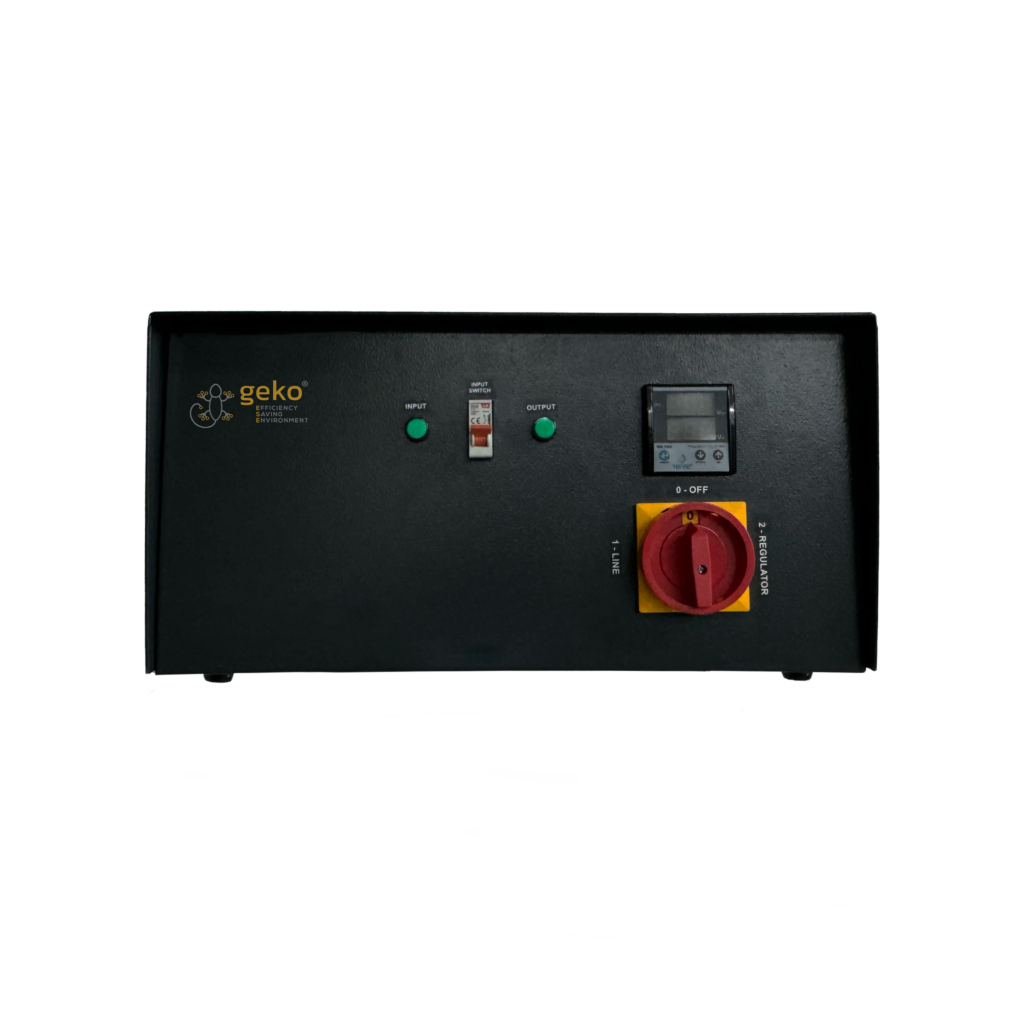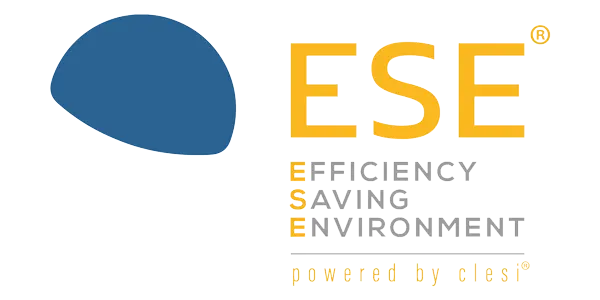

GEKO, by ESE ENERGY, is a revolutionary servo mechanical stabiliser designed to protect and optimise the performance of photovoltaic inverters and wallboxes for charging electric cars.
The issue
Photovoltaic systems now make up a key component of renewable energy production. However, their proper functioning can be impaired by voltage dips (low voltage) or surges, which may cause failures and/or interruptions in inverter operation (inverter lockout). This issue results in a loss of energy production, setbacks for plant owners and potential damage and/or lockout of the inverters themselves.
The solution: geko
Geko is ESE Energy’s innovative solution for voltage stabilisation in photovoltaic systems. It consists in an advanced servo-mechanical stabiliser that continuously and accurately adjusts the grid voltage, ensuring proper inverter operation and optimising photovoltaic energy production. Preventing failures and/or troublesome inverter lockouts.
The benefits

Voltage spike protection
It eliminates problems caused by voltage dips (low voltage) or surges, preventing inverter lockouts and ensuring continued operation of the photovoltaic system.

Increased energy production
It ensures stable grid voltage, optimising inverter performance and increasing photovoltaic power production.

Reduced maintenance costs
Prevents inverter failures caused by voltage fluctuations, reducing maintenance and repair costs.

Increased safety
Geko provides increased safety for the photovoltaic system, protecting it from potential damage resulting from surges.

Easy installation
Geko can be easily installed and requires no modifications to the existing photovoltaic system.
Geko applications
In addition to photovoltaic systems, Geko can be used within a wide range of applications, including:

- Electromobility: protects electric vehicle charging stations (wallboxes) from damage caused by grid fluctuations, ensuring safe and efficient charging of vehicle batteries. Geko prevents incomplete charging on electric vehicles.
- Small Industries: it ensures voltage stability in industrial environments sensitive to grid fluctuations. It protects machinery and plant from faults and malfunctions.
- Data centres: ensures uninterrupted power supply to data centres, preventing interruptions and data loss.
- Home environment: protects home appliances and home automation devices from power surges.
Why geko ?
- It protects photovoltaic systems from damage caused by voltage fluctuations;
- It protects your wallbox from external fluctuations, ensuring easy and safe charging;
- It prevents faults and lockouts of electric vehicle charging stations
- It ensures the proper functioning of household appliances;
- It offers comprehensive protection against harmful voltage fluctuations;
- Available in single-phase and three-phase models from 7.5 kVA to 25 kVA three-phase, with power expandable up to 100;
Geko is the ideal solution for voltage stabilisation within photovoltaic systems, electric vehicle charging stations and other applications in small industries and businesses. Thanks to its advanced technology, its several advantages and its ease of use, Geko represents a valuable investment for those who wish to optimise the performance and increase the safety of their installations, while safeguarding their company value.




